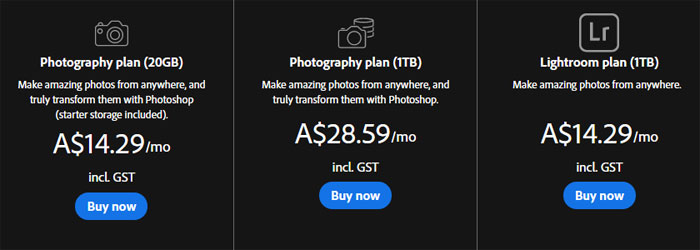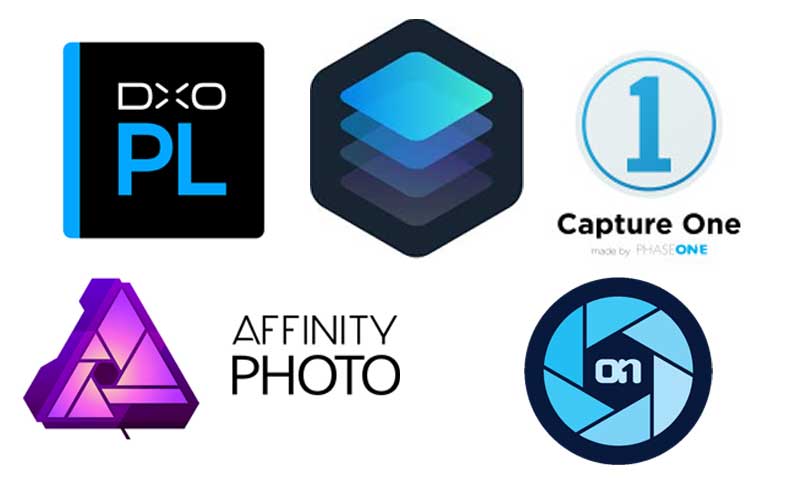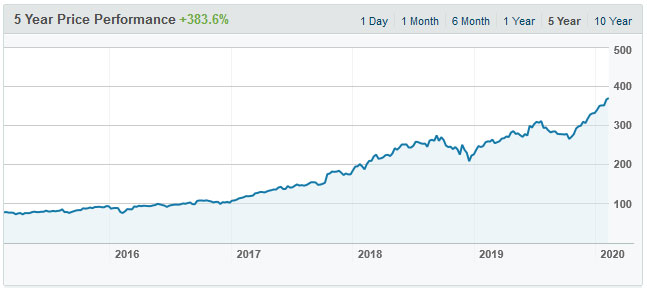UK-based photographer Usman Dawood recently published an opinion article on Petapixel in defense of Adobe. It was a lot like reading a Microsoft fanboy at the height of the Window Vista era — sure, the product works, but at what level of financial cost and frustration?
‘Over the last few years, it seems like it’s become really cool to hate Adobe; kind of like how it’s cool to hate Coldplay,’ Dawood wrote. ‘Except the main difference is that Coldplay really does suck.’
Now, nothing against Coldplay, but people’s livelihoods don’t rely on Coldplay. They’re reliant on how Adobe sets its prices and changes things at will with fairly little consultation, and a ton of obfuscation.
Editor’s Note: Dawood argues that ‘Photoshop is the most famous photo editor for good reason’, and it’s an ‘industry standard’; Lightroom is ‘the best software for bulk operations and quick editing’; the full Adobe suite is the best there is; the controversial subscription model ‘is fantastic’ and a ‘far cheaper option’; and customer support makes up for any update blunders.
Dawood concluded: ‘Adobe now has the largest customer base. More people use Photoshop and Lightroom than any other photo editor on the market. When you have a huge customer base, a small percentage equates to a significant number of individuals. My guess is that most people are happy using the software and it’s simply a vocal minority that dislikes or hates Adobe.’
This opinion piece by Melbourne photographer, Adam Marsh, is a rebuttal of Dawood’s points and here he shares his thoughts on why photographers are hating on Adobe.
Photoshop’s Time with the Top Crown is Going Away
General Motors used to be, for a time, America’s largest car manufacturer with a peak market share of 50.7 percent in the US in 1962. In 2016? 17 percent.
It doesn’t matter whether the Photoshop is still king, because kingdoms usually revolt when the king becomes tyrannical. Even if Adobe’s brand presence is such that it has become a verb, it doesn’t garner loyalty. In fact, if the phrase being ubiquitous is so great, it can eventually become a generic word like ‘aspirin.’
Now, yes it is true, Photoshop is the industry standard – but when a majority of your customers aren’t reliant on industry standards as they are sole proprietors, freelancers, and students, standards aren’t important, because cash flow is.
I’m not going to insult people by pointing to GIMP, Pixlr, or Canva as alternatives because they aren’t.
You best believe though that Affinity Photo surely is, being more reliable than previous iterations, backwards compatible with Photoshop files, and, most importantly, no subscription. Some photographers might not change their editing software, nor switch up their workflow, but others most certainly will when there is an economic incentive to.
If the core defence of not switching over comes down to ‘the need to retrain’, then it’s essentially laziness and reliability that hold people to ransom with Adobe Photoshop. This is not brand loyalty.
There’s another piece of software in Creative Suite that is having a mass exodus right now, and that’s Premiere Pro. Trust me. When people take the time to learn how to use DaVinci Resolve, they’ll realise that the differences weren’t all that impressive in the beginning.

The Lights are Dimmer on Lightroom
With Adobe’s ever-increasing shift towards Cloud Storage, it seems that there’s a lack of respect for people who keep their files on hard drives.
While Lightroom is fast and snappy, it’s hard to ignore the issues and glitches that pop up, as well as the major differences between Classic CC and Lightroom 6.
Lightroom 6 was US$149 + shipping directly bought from Amazon. US$149 for life!
Buying the ‘Photography plan’ works out to US$179 a year — with Photoshop and 20GB of storage included.
Do you know what difference a 50 percent increase is? It’s not always good business to hike up your rates drastically. If I doubled the rates my repeat clients expect from me, I guarantee they’d move very quickly to another photographer or videographer who is within their price range.
Lightroom works very well at what it does, but people are tired of being mistreated and forced into a business arrangement with Adobe. They’re waiting, just waiting for another competitor to come in and fill the void like Affinity Photo is doing with Photoshop.
Even if Capture One or Skylum Luminar work well as a singular alternative, there will come a time when another brand creates a suite — and you won’t have to wait too long from what I hear.
The Suite-r The Taste, The More Cavities There Are
With that dad joke, I sure do sound like a grumpy old man, and Adobe has given me plenty of reason to be.
Now, this is a hard point to refute, yet it speaks so glaringly to Adobe’s deafness to its customers’ needs. It simply isn’t as agile or nimble as it used to be. Why should it be? Its near-monopoly is at an all-time peak, yet the age-old saying is true: pride comes before the fall.
Truth be told, there are positives to staying within the one suite, but more and more, it isn’t so much of an issue now. Take video, for example.
You can edit in Final Cut, create VFX in Flame, grade and sound mix in Resolve – it’s not impossible to get around the cult of Adobe with a small investment of time. You don’t need to cut in Premiere, add effects with After Effects, and finish in Audition. It’s not as unique in its workflow as it used to be.
With emotions running high, people are singing along to the Queen lyrics ‘I want to break free!’ and are motivated to now looking to do as I’ve done and avoid Adobe products entirely.
The Subscription Model
This is where the rubber meets the road. The subscription model is chaos. You can’t bury your head in the sand and say you have no idea why people are angry at the subscription model.
When you have a doubling of the monthly subscription, with fairly little warning or justification – the base price point of Photoshop and Lightroom jumped from US$10 per month to US$20 per month – people will get very angry.
And Adobe’s response to their outcry? ‘From time to time, we run tests on Adobe.com which cover a range of items, including plan options that may or may not be presented to all visitors to Adobe.com. We are currently running a number of tests on Adobe.com.‘
Effectively, they are A/B testing their prices on their loyal customers and not being transparent nor upfront to those customers who deserve better. This leads their customers to think that the prices are arbitrarily set. And it is! You can still access the old $10 per month via an incredibly old link buried in the site, or calling the sales line (or support chat) and threatening to quit till you’ve gifted a discount code.
Regarding the point about licenses, do you know what happens when companies abuse their licensing agreements? You get farmers buying tractors from the ’80s at the cost of a modern tractor because John Deere disallow farmers to fix their own tractors due to their software licensing. You get Adobe rescinding subscriptions to fully-paid-up customers in Venezuela (which wouldn’t happen if they owned the software outright).
The biggest reason why Adobe has gone to a subscription pricing is to milk the customer for every last dollar, over the long term.
It reflects in its share price in April 2015 at $73.15 to January 2020 at a high of $351.14. That’s almost five times the share price… yet where are they providing the customer five times the value? (They’re not, hence the anger!)
Customer Support
Let’s show the ways that Adobe dazzles us with its excellence.
Trustpilot.com: 1.2 out of 5 based on 754 reviews
Sitejabber.com: 3.3 out of 5 based on 111 reviews
Capterra: 4.7 out of 5 based on 5,613 reviews
ConsumerAffairs: 3.8 out of 5 based on 1,112 reviews
TrustRadius: 9.2 out of 10 based on 1,476 reviews
G2.com: 4.6 out of 5 based on 10,949 reviews
Admittedly, some of those are ratings are great and in volumes for the company or the product!
Awesome! And others are terrible. If you’re quick to dismiss the negative reviews, however, then you are as guilty as Adobe to not listening to your customer’s needs and offering support when offered.
Take a look at these quotes:
‘Have been passed around 3 times and the issue still hasn’t been solved.’
‘Over an hour to do the simple task of changing my location from UK to USA so I can pay for a subscription.’
‘I hope that Adobe and their exploitative monopoly position one day ends due to competitors outdoing them.’
‘They keep billing our business even after canceling service three times!’
‘My photoshop had crashed and I needed help recovering a file. The person I spoke to really did not care. He was just giving solutions from the internet and ones I had already tried.’
This beauty was sent on the 23rd of January 2020:
‘They send emails. But they do not respond to information you send to them in email. They respond by sending the same help links over and over again. It’s as if they have absolutely no regard or respect for their customers time.’
The fact is, this isn’t the ’90s any more. Companies can and will shift you to a help support farm overseas, instead of being accessible over the phone with employees based in your country and timezone.
Adobe is guilty of doing this like Microsoft and many other companies. To say its customer support is amazing is a very naive view in lieu of the many negative quotes as listed above.
No company can be perfect, I agree wholeheartedly here, yet it feels like Adobe doesn’t try.
Why would it? Its share price increases with every price hike, every little software weak that makes you more reliant on its suite, every part of the gate closing you in on them.

Final Thoughts
I’m reserving my thoughts to the many loyal customers at home, outraged at the way Adobe is treating them. I hear you completely, as I was once you.
Moving away completely from Adobe was a hard but necessary task due to working as an event photographer in the small market of Melbourne,
When I do work in agencies, I am forced to use Creative Suite, yet at home, it’s a completely different story. I don’t miss Adobe at all, even if it has unique tools and workflows. They’re just not essential to creativity.
Many will accuse me of being miserly with my funds, but with the rising cost of inequality, rent, cost of living, every dollar counts. I’d rather support a company like Affinity or Blackmagic (who own Davinci Resolve) with a reasonable once-off fee than a rent-seeking conglomerate like Adobe that’s only looking to jack up its share price.
Don’t stop talking about your Adobe experiences. Jump on the #CancelAdobe train instead.
– Adam Marsh is a a photographer / videographer based in Melbourne that specialises in corporate, events, birthdays and advertisement.
Visit his website Moment 2 Moment Videography Photography and his Youtube Channel





Downloading my free trial of Affinity Photo and Affinity Publisher right now…. say no more!
I unsubscribed from Adobe this year and have gone all in on Capture One / FCX and just use Dropbox exports as a way to send files to clients. Easy done.
This definitely brought a light to my eye, and now that I see what you mean, yes I do believe it is time to cut ties with adobe
Coldplay never sucked. I could not read after that sentence.